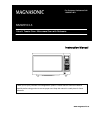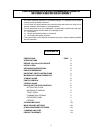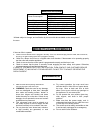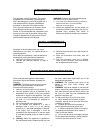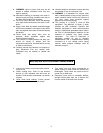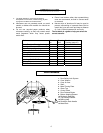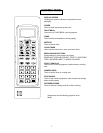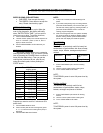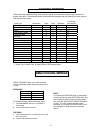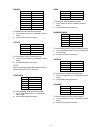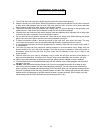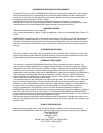
1
5
4
1
2
10
7
3
1
6
9
8
1
1. The ideal material for a microwave utensil is
transparent to microwave, it allows energy to pass
through the container and heat the food.
2.
Microwave can not penetrate metal, so metal
utensils or dishes with metallic trim should not
be used.
3. Do not use recycled paper products when
microwave cooking, as they may contain small
metal fragments which may cause sparks
and/or fires.
4. Round /oval dishes rather than square/oblong
ones are recommend, as food in corners tends
to overcook.
5. Narrow strips of aluminum foil may be used to
prevent overcooking of exposed areas. But be
careful don’t use too much and keep a distance
of 1 inch (2.54cm) between foil and cavity.
The list below is a guide to help you select the
correct utensils:
Cookware Microwa
ve
Toast/
Broil
Combination
Cooking (page 10)
Heat–Resistant Glass (glass tray) Yes Yes Yes
Non Heat–Resistant Glass No No No
Heat–Resistant Ceramics Yes Yes Yes
Microwave–Safe Plastic Dish Yes No No
Kitchen Paper Yes No No
Metal Tray No Yes No
Metal Rack No Yes No
Aluminum Foil & Foil Container No Yes No
Baking Plate No Yes No
Rotisserie Rack No Yes No
1. Door Safety Lock System
2. Oven Window
3. Oven Air Vent
4. Shaft
5. Metal Turning Plate
6. Glass Tray
7. Control Panel
8. Door Release Button
9. Bottom Heating Element
10. Rotisserie Rack/Spit
11. Top Heating Element
12. Baking plate
13. Rotisserie Rack Handle
14. Metal Rack
U
U
T
T
E
E
N
N
S
S
I
I
L
L
S
S
G
G
U
U
I
I
D
D
E
E
P
P
A
A
R
R
T
T
N
N
A
A
M
M
E
E
S
S
6



